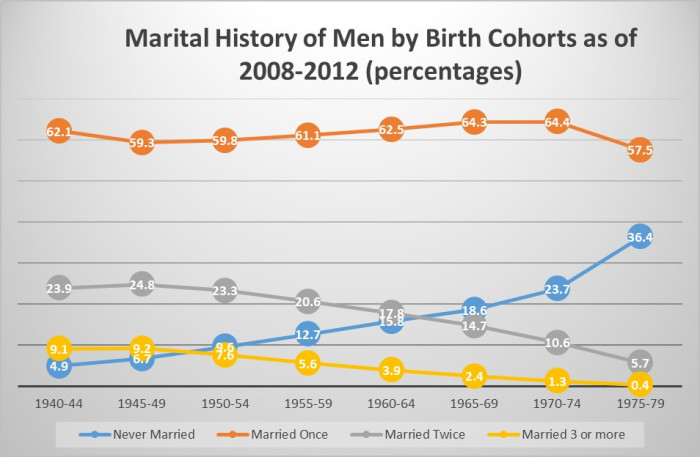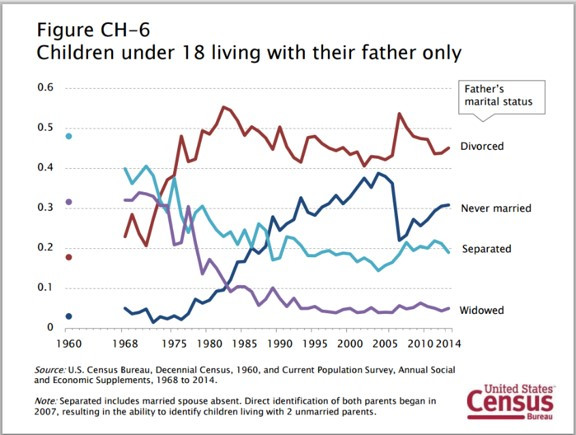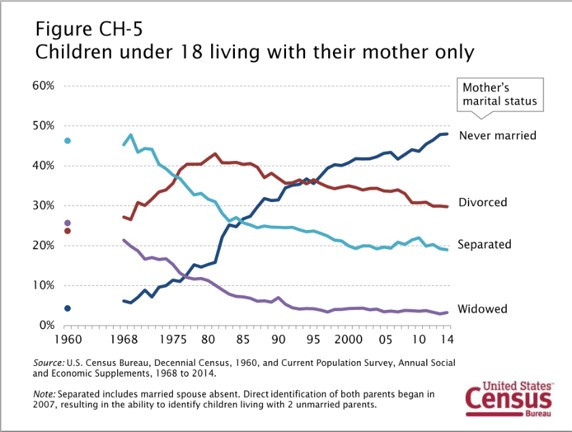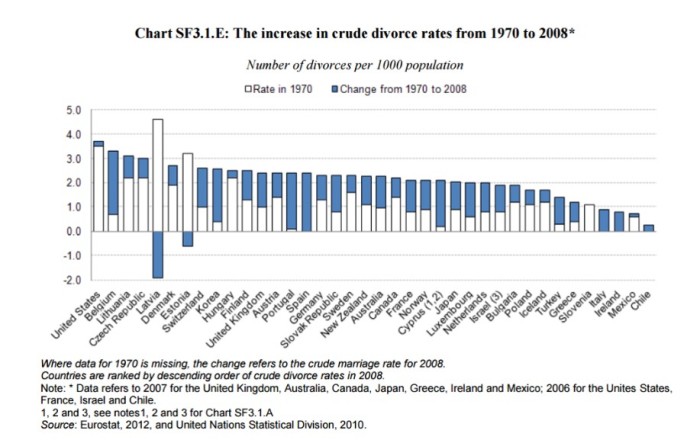Over time this figure shows the changes in marital history of men in different birth cohorts (a birth cohort is all the men born in a specific time period). The men born in the years 1940-44 were ages 77-82 when this report was created. The men born in the years 1975-79 were ages 32-37. Keep this in mind when looking at these data. The younger group (1975-79) is still likely to experience more changes in their marital history.
Nevertheless, you can still see some trends. On average, about 2/3 of men are married at least once and this has remained constant over much of this period except this most recent period (those born 1975-79 who still have a chance of marriage). A more difficult trend to determine in whether 2nd and 3rd time marriages are declining– the cohorts between 1950-1969 seem to suggest this trend. The increase in the number of men never getting married is also apparent, but there is also a trend of marrying at older ages so some of the men born between 1970-1979 may still get married. 




